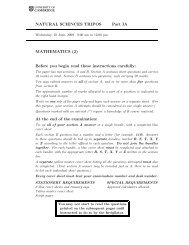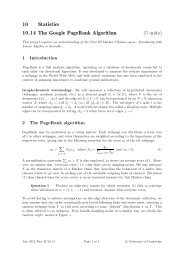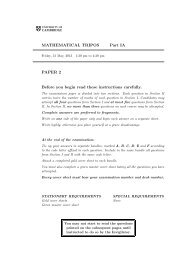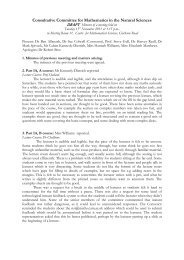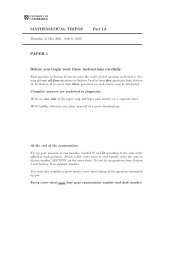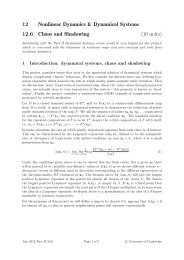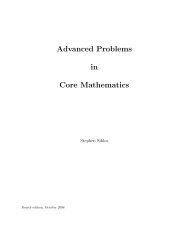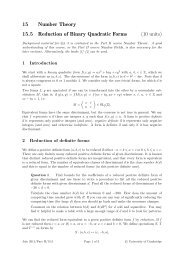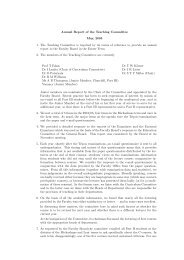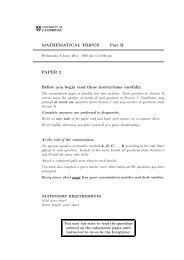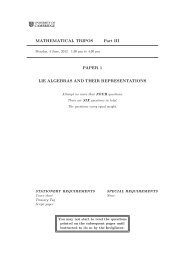MATHEMATICAL TRIPOS Part II PAPER 3 Before you begin read ...
MATHEMATICAL TRIPOS Part II PAPER 3 Before you begin read ...
MATHEMATICAL TRIPOS Part II PAPER 3 Before you begin read ...
- No tags were found...
You also want an ePaper? Increase the reach of your titles
YUMPU automatically turns print PDFs into web optimized ePapers that Google loves.
1527K Principles of StatisticsWhat is meant by a convex decision problem? State and prove a theorem to theeffect that, in a convex decision problem, there is no point in randomising. [You may usestandard terms without defining them.]The sample space, parameter space and action space are each the two-point set{1, 2}. The observable X takes value 1 with probability 2/3 when the parameter Θ = 1,and with probability 3/4 when Θ = 2. The loss function L(θ, a) is 0 if a = θ, otherwise 1.Describe all the non-randomised decision rules, compute their risk functions, and plotthese as points in the unit square. Identify an inadmissible non-randomised decision rule,and a decision rule that dominates it.Show that the minimax rule has risk function (8/17, 8/17), and is Bayes against aprior distribution that <strong>you</strong> should specify. What is its Bayes risk? Would a Bayesian withthis prior distribution be bound to use the minimax rule?28K Optimization and ControlA particle follows a discrete-time trajectory in R 2 given by( ) ( ) ( ) ( ( )xt+1 1 1 xt t ǫt=+ uy t+1 0 1 y t 1)t + ,0where {ǫ t } is a white noise sequence with [ Eǫ t = 0 and Eǫ 2 t = v. Given (x 0, y 0 ), we wishto choose {u t } 9 t=0 to minimize C = E x 2 10 + ∑ ]9t=0 u2 t .Show that for some {a t } this problem can be reduced to one of controlling a scalarstate ξ t = x t + a t y t .Find, in terms of x 0 , y 0 , the optimal u 0 . What is the change in minimum Cachievable when the system starts in (x 0 , y 0 ) as compared to when it starts in (0, 0)?Consider now a trajectory starting at (x −1 , y −1 ) = (11, −1). What value of u −1 isoptimal if we wish to minimize 5u 2 −1 + C?<strong>Part</strong> <strong>II</strong>, Paper 3[TURN OVER



